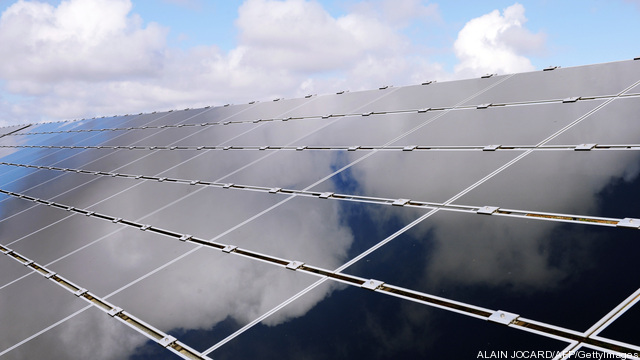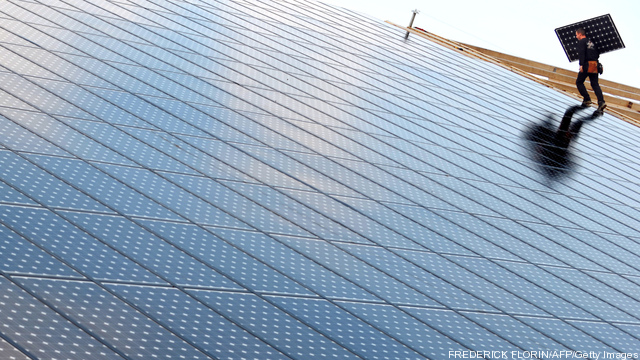
A recent report from the National Institute for Science, Law & Public Policy came with a provocative press release title: “Smart Grid Funding Misspent on Obsolete Technologies.” The press release got plenty of attention from the utility and smart grid news circles, but it’s tough to tell if any of those actually read the report, “Getting Smarter About the Smart Grid,” written by Timothy Schoechle, a consultant in computer engineering and standardization and former faculty member of the University of Colorado’s College of Engineering and Applied Science. The report primarily takes aim at smart meters, which got the lion share of stimulus funding. Schoechle raises many questions and concerns that many others in the industry have identified, including the value of smart meters (although he also does not acknowledge their value when connected to more end-to-end smart grid projects, as many others do); the question of data privacy; and the issue of whether the meters, in and of themselves, will save consumers money.
Reliability
Sign up and get Breaking Energy news in your inbox.
We will never sell or share your information without your consent. See our privacy policy.

There are many things you can do to lower your electric bill, but going the extra mile to make your home energy efficient can save you hundreds per month. Here, homeowner Gerald Singleton explains how he was able to reduce his monthly bills, and drastically cut the cost of installing solar paneling to do so. “My heating bill was getting to be $600 a month, because I was running a space heater in my mother’s room 24 hours a day,” says the Flushing, N.Y. resident. “It just was becoming prohibitive to heat the house in the winter.” Keep reading →

Solar’s economics are increasingly attractive yet often poorly understood. Does solar have an image problem?
Businesses small and large – but particularly those with high electricity costs – can achieve considerable savings and create long-term price certainty by installing a solar electric system instead of purchasing electricity from their utility. In fact, every business with a minimum of space (for the solar system) and high electricity costs should examine solar’s potential to reduce overhead in the short- and long-term. Keep reading →

Environmental Protection Agency (EPA) officials are seeing “no surprises” as the power industry plans compliance with new mercury rules, but some industry officials say the surprises are still to come – in customer bills.
EPA Assistant Administrator Gina McCarthy told the National Association of Regulatory Utility Commissioners in Baltimore this week that “just a handful” of companies with specific compliance challenges have come to EPA to discuss getting additional time to comply with the Mercury and Air Toxics Standard (MATS). Keep reading →

Long Island Power Authority, which at one point had 1.1 million customers without power in the wake of Hurricane Sandy, said Wednesday it is close to restoring power to the last 8,000 homes and businesses that can receive power – more than two weeks after the hurricane ravaged the East Coast leaving more than 8 million customers in 21 states in the dark.
But there remain some 38,000 customers in the areas of Long Island that flooded whose homes and businesses need to be checked and/or repaired before they can have their service restored. Consolidated Edison and New Jersey Central Power and Light also have thousands of customers in a similar predicament, according to CNBC. Keep reading →

Solar power reduces electricity prices. As more solar is added to deregulated power grids, power prices fall lower. The secret sauce is the markets.
Deregulated power markets are invisible to many Americans, yet every few minutes they set the price for much of their electric power. There are ten separate power markets currently operating in the North America. According to the ISO/RTO Council, they serve approximately two-thirds of electricity consumers in the United States and more than half of all consumers in Canada. Keep reading →

More than two weeks have passed since Hurricane Sandy brought the Eastern Seaboard to a standstill. Although life is slowly returning to normal, Sandy joins a long series of painful reminders of how dependent 21st century America is on reliable electricity: it powers nearly every facet of our lives. The potential silver lining in the wake of Sandy’s devastation is the influx of interest in our outdated and inadequate transmission grid, highlighting long ignored issues from the benefits of buried transmission lines to the importance of an integrated, redundant, resilient grid – built to withstand even Sandy’s fury.
A robust and modern electric grid is also essential for taking advantage of America’s unmatched renewable energy resources. Wind and sunlight cannot be delivered to customers from their best sources – mostly remote areas and offshore – using railcars and pipelines like coal, oil, and gas; they need transmission lines. In the Southeast, where wind and solar are relatively scarce, transmission lines are critical for bringing cheap and abundant renewable resources from other regions. The Tennessee Valley Authority (TVA), which provides power to nearly all of Tennessee and other Southeastern areas, is now importing wind power from eight wind farms in the Midwest. Alabama Power, a subsidiary of Atlanta-based Southern Company, last year made one of the largest wind purchases ever from producers in Oklahoma. Keep reading →

Quick Take: Not only can old dogs learn new tricks. They can invent them. Usually our Discovery Showcase pieces highlight breakthroughs from small startups or government research labs. This time, however, we’re putting the spotlight on new technology from ABB, the 129-year-old industrial giant headquartered in Switzerland. The firm claims to have invented a circuit breaker for high voltage direct current (HVDC). If so, then HVDC just became a much more viable alternative for the long-distance transfer of large amounts of power. – By Jesse Berst
ABB’s super fast high voltage direct current (HVDC) circuit breaker will, the company says, open the doors to more efficient and reliable electrical supply systems and the efficient integration of renewable energy. It combines extremely fast mechanics and power electronics that will be able to interrupt power flows “equal to the output of a large power station within five milliseconds – 30 times faster than the blink of a human eye.” Keep reading →

Hurricane Sandy left over eight million people along the East Coast without power. More than a week later, nearly two million are still in the dark. With a warming planet, it’s likely there will be more Sandy-strength storms in the years to come. At a press conference last week, New York Gov. Andrew Cuomo said the city needs to “not only rebuild, but rebuild stronger and smarter.”
So how should the nation prepare? Weather isn’t the only reason to update the grid. Power outages cost the nation between $80 billion and $180 billion each year, according to research by Massoud Amin, a senior member of Institute for Electrical and Electronics Engineers. And they’re getting worse. The number of major outages has doubled in the last 10 years.

One criticism of wind and solar power is their lack of reliability. Both depend on the weather for energy production and any change in weather affects their ability to produce electricity. In many regions, wind has the added liability of producing power when it is least needed. To solve this challenge, some suggest pairing standby generators with wind and solar farms so continuous power can be produced. Under this scheme, proponents argue that standby generators should be capable of varying its output to assure continuous energy production.
Varying output is called load following or turn down. The physical objective is to throttle back power generation to response to changing demands. The financial objective is to turn down without increasing fuel consumption on a unit basis. The environmental objective is to minimize air pollution, specifically carbon. Keep reading →
